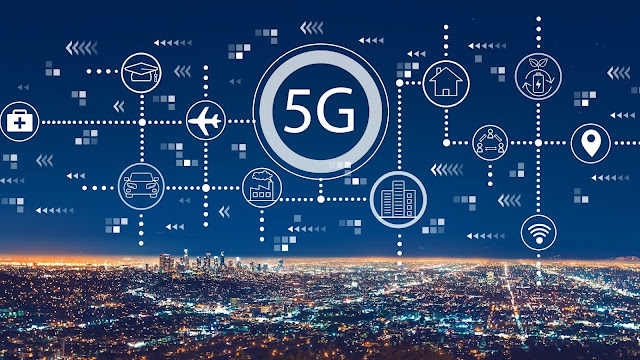5G Technology And Its Impact | Advantages And Disadvantages Of 5G
5G: The Future of Connectivity
In recent years, there has been much talk about the next
generation of wireless technology: 5G. With its promise of faster speeds, lower
latency, and greater capacity, 5G is poised to revolutionize the way we connect
and communicate. In this blog post, we will explore the benefits of 5G and its
potential impact on various industries.
What is 5G?
5G is the fifth generation of wireless technology, following 4G/LTE. It is designed to provide faster speeds, lower latency, and greater capacity than its predecessors. With 5G, users can expect to experience speeds up to 100 times faster than 4G/LTE, allowing for more seamless streaming and faster downloads.
The technology behind 5G is complex, but in simple terms, it
involves the use of higher frequencies and advanced antennas. 5G uses a range
of frequencies, including high-band, mid-band, and low-band, to provide
different levels of speed and coverage. Additionally, 5G uses advanced
antennas, such as Massive MIMO, to increase capacity and improve coverage.
Benefits of 5G
Faster Speeds: As mentioned earlier, 5G is designed to provide faster speeds than its predecessors. With speeds up to 100 times faster than 4G/LTE, users can expect to experience seamless streaming and faster downloads.
Lower Latency:
5G also promises to reduce latency, or the time it takes for data to travel from one device to another. This means that devices will be able to communicate with each other in real-time, which is particularly important for applications like virtual reality and autonomous vehicles.
Greater Capacity:
5G is also designed to provide greater capacity than 4G/LTE, allowing more devices to connect to the network simultaneously without slowing down. This is particularly important for the growing number of connected devices in the Internet of Things (IoT).
Improved Reliability:
5G is expected to be more reliable than 4G/LTE, with fewer dropped connections and better coverage in areas with poor reception.
New Applications:
With its faster speeds, lower latency, and
greater capacity, 5G will enable new applications that were not possible
before. This includes applications like augmented and virtual reality,
autonomous vehicles, and remote surgery.
Potential Impact of 5G
Healthcare:
5G has the potential to revolutionize healthcare by enabling remote surgeries and telemedicine. With its lower latency and faster speeds, doctors will be able to perform surgeries remotely, and patients will be able to receive real-time medical care from anywhere in the world.
Smart Cities:
5G will also have a significant impact on the development of smart cities. With its ability to connect a large number of devices simultaneously, 5G will enable the creation of smarter traffic management systems, better public transportation, and more efficient waste management.
Education:
5G will also transform education by enabling virtual and augmented reality learning experiences. With its faster speeds and lower latency, students will be able to have immersive learning experiences, even in remote areas.
Manufacturing:
5G will improve efficiency and reduce downtime in manufacturing by enabling real-time monitoring of equipment and predictive maintenance. This will help manufacturers reduce costs and increase productivity.
Entertainment:
5G will also revolutionize the entertainment
industry by enabling new applications like augmented and virtual reality. With
its faster speeds and lower latency, users will be able to have immersive
entertainment experiences like never before.
Conclusion
5G technology has the potential to transform the way we connect and interact with the world around us. Its high-speed connectivity, low latency, and massive device capacity make it an ideal technology for powering emerging technologies such as IoT, AR/VR, and autonomous vehicles. With the deployment of 5G networks, we can expect faster download and upload speeds, more reliable connections, and a seamless user experience across a wide range of devices.
However, the implementation of 5G technology also comes with its challenges, including the need for significant infrastructure upgrades and the potential for increased cybersecurity risks. As with any new technology, there will also be concerns around the impact on human health and the environment, which will need to be addressed and studied in-depth.
Overall, 5G technology represents a significant step forward
in the evolution of wireless communication, with the potential to bring about
transformative changes in various industries and sectors. As the technology
continues to evolve and expand, it will be interesting to see how it shapes our
world in the years to come.




Comments
Post a Comment